Zvolen
Zvolen (pronounced [ˈzʋɔlɛn] (![]()
Zvolen | |
|---|---|
City | |
 | |
 Coat of arms | |
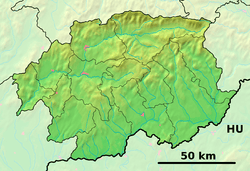 Zvolen Location of Zvolen in the Banská Bystrica Region  Zvolen Location of Zvolen in Slovakia | |
| Coordinates: 48°34′14″N 19°07′3″E | |
| Country | |
| Region | Banská Bystrica |
| District | Zvolen |
| First mentioned | 1135 |
| Government | |
| • Mayor | Lenka Balkovičová |
| Area | |
| • Total | 98.727 km2 (38.119 sq mi) |
| Elevation | 293 m (961 ft) |
| Population (2018-12-31[1]) | |
| • Total | 42,321 |
| • Density | 430/km2 (1,100/sq mi) |
| Time zone | UTC+1 (CET) |
| • Summer (DST) | UTC+2 (CEST) |
| Postal code | 960 01 |
| Area code(s) | +421-45 |
| Car plate | ZV |
| Website | www.zvolen.sk |

Etymology
The name is of Slovak (Slavic) origin meaning "the chosen one, splendid, excellent". The Hungarian Zólyom and the German Sohl were derived from the Latinized form Zolium[2] (earliest mention 1135). An adjective "Old" (German: Altsohl, Slovak: Starý Zvolen, Latin: Antiquum or Vetus Solium) distinguish Zvolen from Banská Bystrica (German: Sohl, Neusohl).[2]
History
Zvolen has been inhabited since the Paleolithic. In the 9th century, a Slavic settlement (today the Môťová neighborhood) became a regional center of what is now central Slovakia. Zvolen remained the capital of Zólyom County until the 1760s. In the 11th and 12th centuries, one of the largest medieval castles in Europe, Pustý hrad, was constructed. The town, originally built under the castle, lay on an important trade route (Via Magna) from Buda to Kraków. Zvolen was granted town privileges by King Béla IV in the 1230s - as one of the first towns in the Kingdom of Hungary. The privileges were confirmed on 28 December 1243, after the original document was destroyed in war. Later, King Louis I the Great built a new castle, which became a popular hunting resort of the Hungarian kings. The future queen regnant Mary of Hungary and emperor Sigismund celebrated their wedding there in 1385.
In the Rákóczi's War of Independence the Kuruc army in the battle of Zvolen defeated the enemy forces from Austria, Denmark, Vojvodina and Hungary.
In 1848-49, Ľudovít Štúr was a member of the Diet, with Zvolen as his constituency. In 1871-1872, two new railways were built and Zvolen became an important railroad hub and important industrial center. Zvolen played an important role during the Slovak National Uprising. Two of its armored trains, which were made in the local railway manufactory, Hurban and Štefánik can be seen near the Zvolen castle.
Zvolen is an important railroad, an important road hub and has a large timber factory and a technical university, the Technická univerzita vo Zvolene. An airport in nearby Sliač offers direct flights to Prague. The town square was modernized in 2002 and local businesses are popular with tourists. In wintertime an ice rink is constructed in the center and festive celebrations run throughout December.
Demographics
Zvolen has a population of 43,147 (as of 31 December 2005).[3] According to the 2001 census, 95.9% of inhabitants were Slovaks and 1.2% Czechs. The religious make-up was 52.5% Roman Catholics, 26.4% people with no religious affiliation, and 15% Lutherans.[3]
Sport
The local ice hockey team HKm Zvolen plays in the Slovak Extraliga.
Notable people
- Bálint Balassi, poet and nobleman
- Karol Beck, tennis player
- Jozef Cíger-Hronský, writer
- Ján Lašák, ice hockey player
- Vladimír Maňka, politician
- Vladimír Mečiar, politician
- František Velecký, actor
- Ľudovít Štúr, politician, linguist, writer, slovak poem and lover of Adela Ostrolúcka
Twin towns — sister cities
Zvolen is a member of the Douzelage, a town twinning association of towns across the European Union. This active town twinning began in 1991 and there are regular events, such as a produce market from each of the other countries and festivals. As of 2019, its members are:[4]









.svg.png)


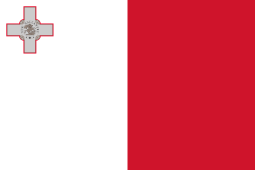

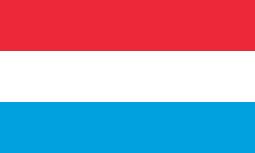












- Other twinnings[5]





Gallery
 Zvolen Castle
Zvolen Castle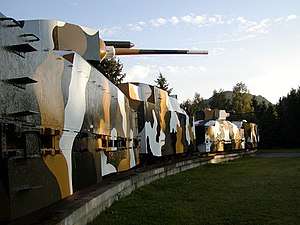 Armored train Hurban
Armored train Hurban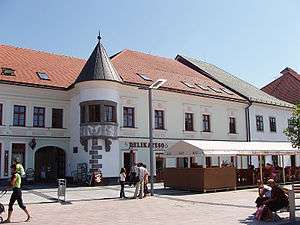 City centre of Zvolen
City centre of Zvolen Zvolen in 1596
Zvolen in 1596
- Slatina river in Zvolen
References
- "Population and migration". Statistical Office of the Slovak Republic. Retrieved 2019-04-16.
- Štefánik, Martin; Lukačka, Ján, eds. (2010). Lexikón stredovekých miest na Slovensku [Lexicon of Medieval Towns in Slovakia] (PDF) (in Slovak). Bratislava: Historický ústav SAV. p. 564. ISBN 978-80-89396-11-5.
- "Municipal Statistics". Statistical Office of the Slovak republic. Archived from the original on 2007-04-27. Retrieved 2007-05-03.
- "Member towns". Douzelage. Retrieved 2019-08-20.
- "Partnerské mestá" (in Slovak). Zvolen. Retrieved 2019-09-01.
External links
| Wikimedia Commons has media related to Zvolen. |